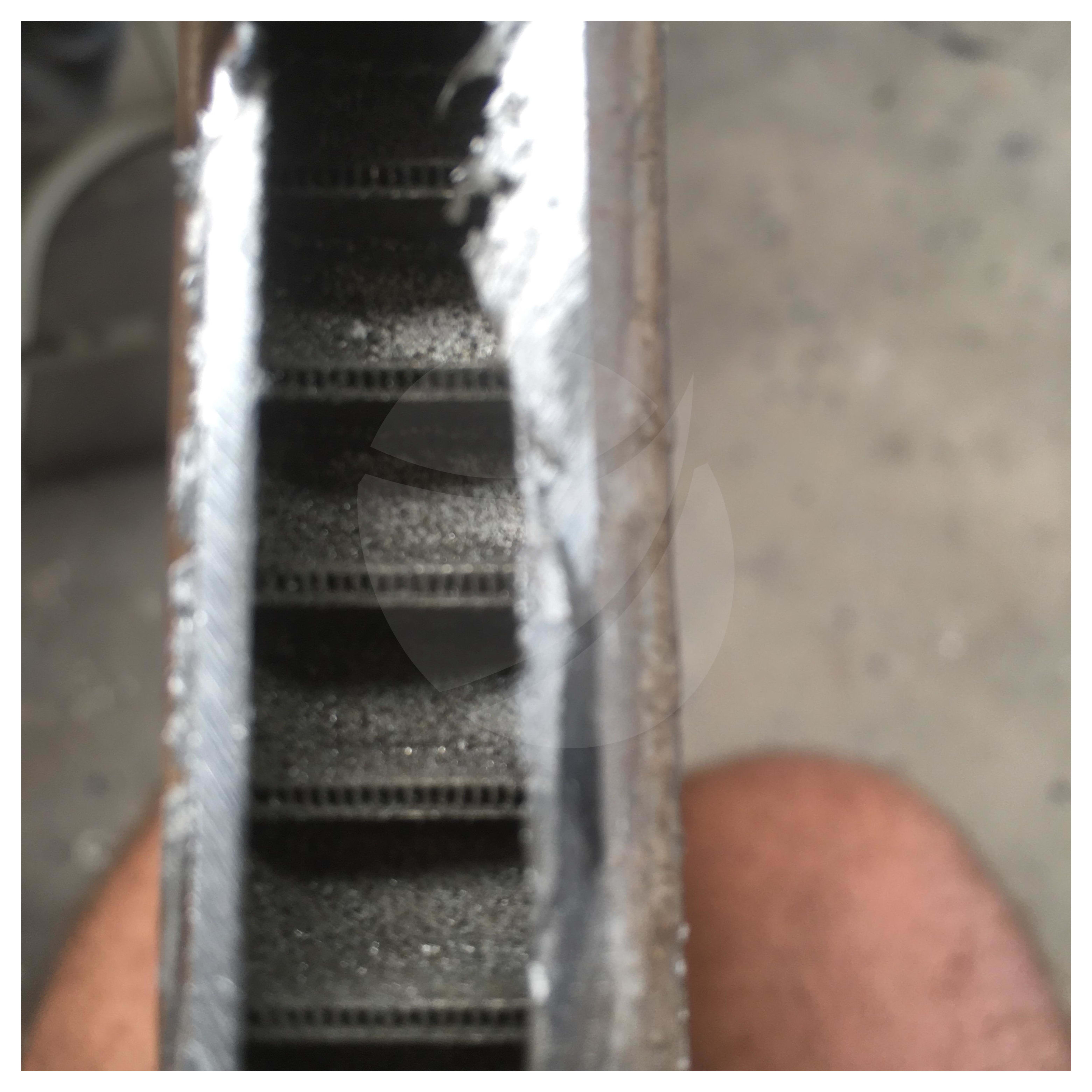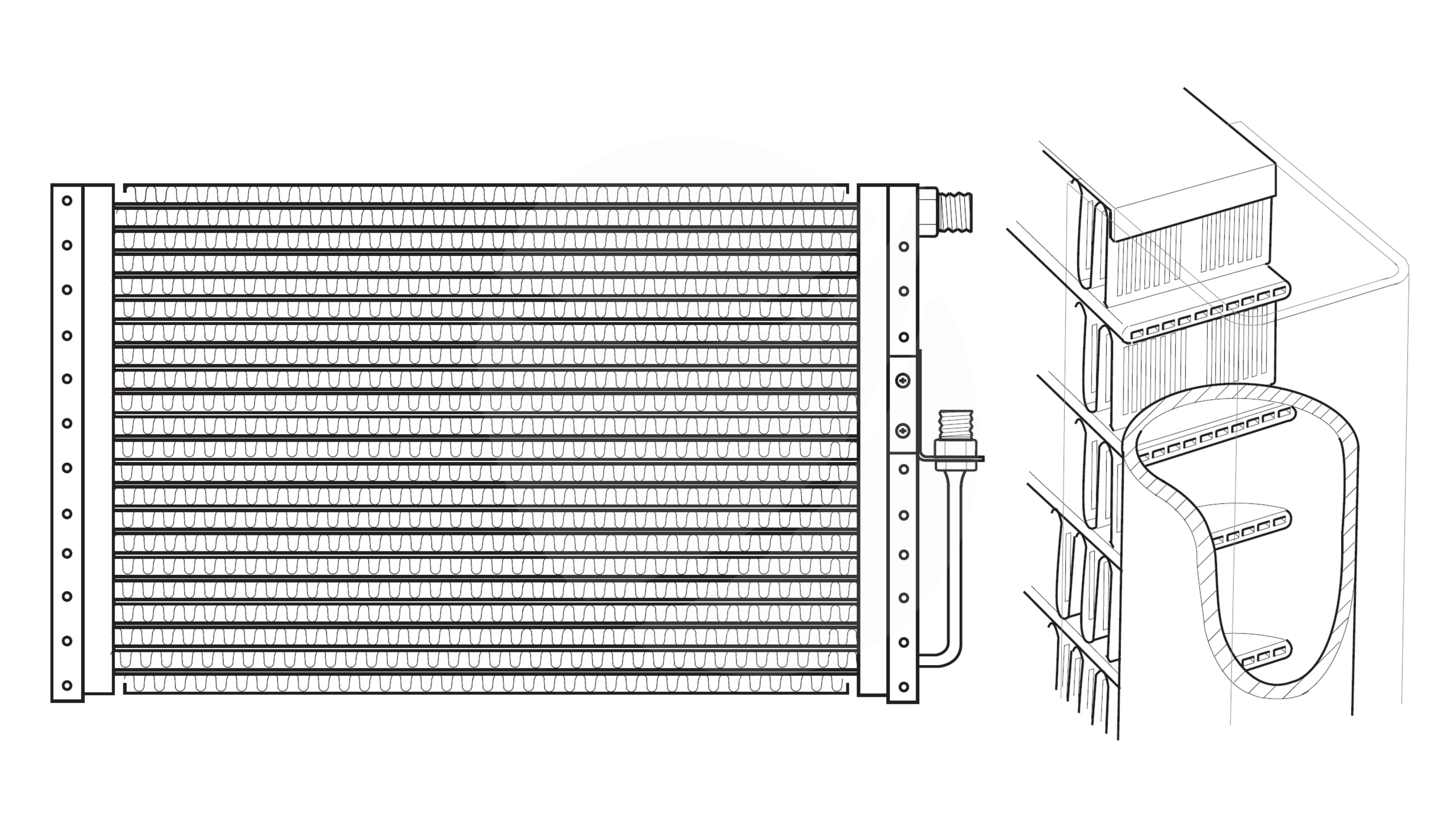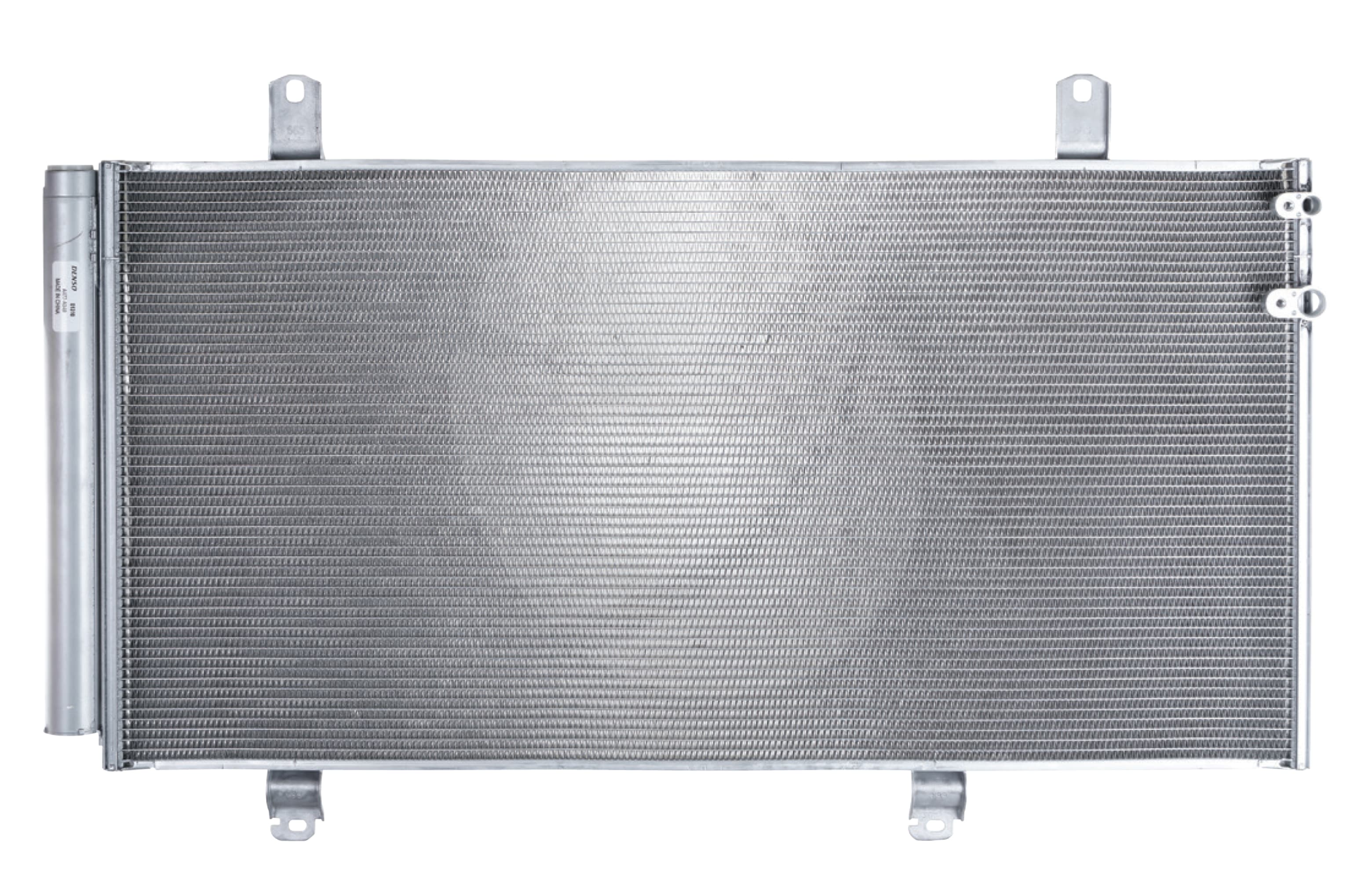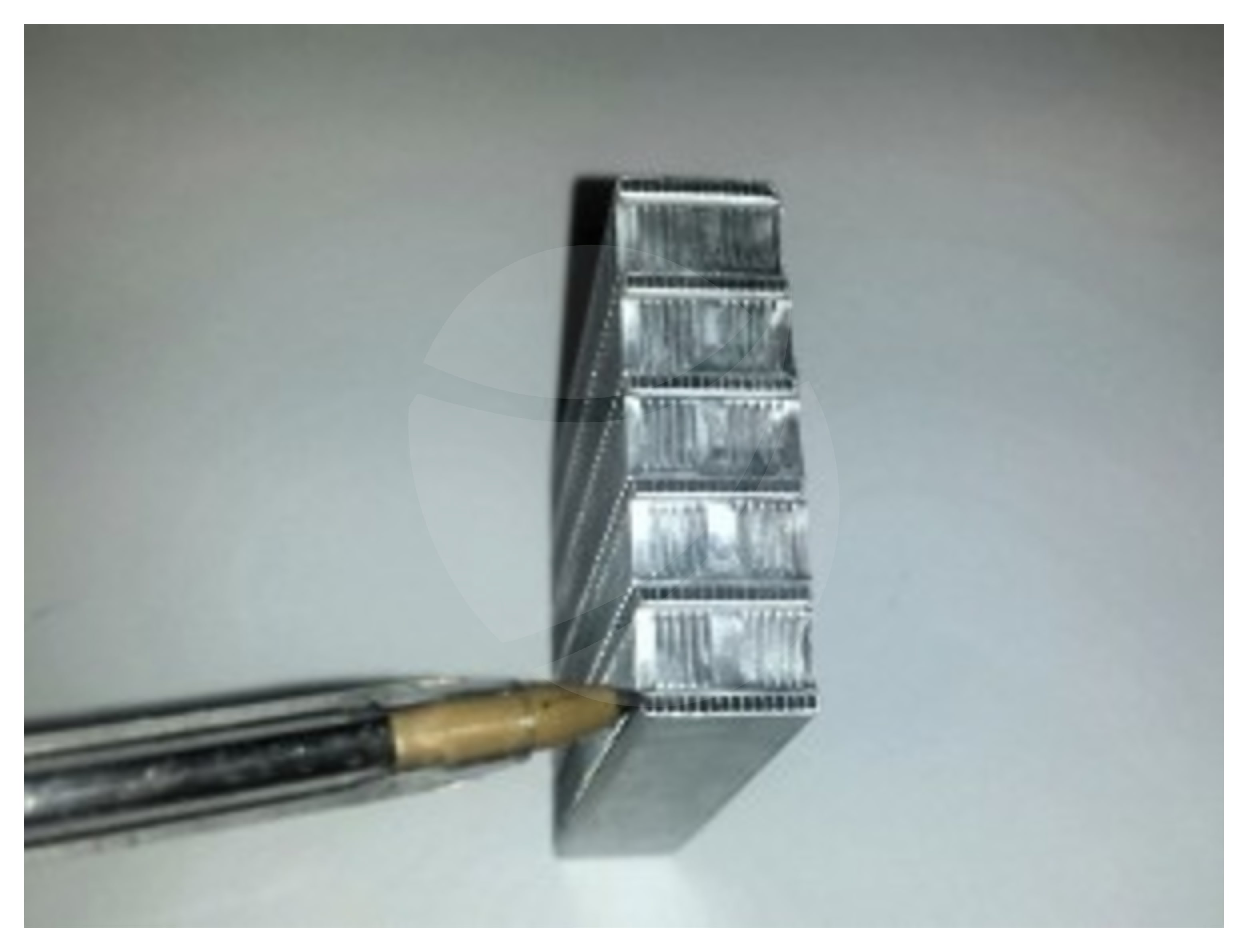Peter had a Toyota Landcruiser HZJ105 with a failed compressor clutch.
He noticed that the oil had metal shavings throughout it and the desiccant bag also appeared to have metal shaving on it.
Typically when a failed compressor presents itself that has filled the system with debris, we would flush the system. With the newer Multi-Flow condensers however you will need to replace the system as you cannot flush it clean.
| Due to the passages in the parallel flow condensers running back and forth across the core several times plus their small size (smaller than the tip of a pen), it becomes impossible to remove contaminants from the system. |
|
If the condenser is left in the system, it remains clogged with debris which can cause high head pressures and can result in the lack of cooling. A system that continues to run with high pressures it can lead to another compressor failure with its excessive wear.
Knowing this, Peter gave Martin from Highgate Air a call to confirm his suspicions. He ended up ordering the full kit to replace the system to ensure he didn’t have to re-work the job, losing time and money.

|
Once he completed the job – out of curiosity Peter cut the end tank off with a hack saw to find the build up of metal at the end of the tubes. Typically a system blockage that is invisible, it gives good context to how much debris and metal shavings can build up in the small passages. . |
 |
Types of Multi-flow (Parallel-flow) CondensersThe multi-flow condenser may look similar to either the tube & fin or the modine, but is constructed so that refrigerant flows into a number of the horizontal tubes simultaneously. A whole section of the condenser receives refrigerant from the inlet, usually about one third of the condenser or more. |
 |
Similar to the parallel-flow condenser but is equipped with a modulator tube which houses a desiccant bag receiver drier. This condenser has vertical header tubes mounted either side of horizontal, flat-section, multi-cored, aluminium tubing and finning. Refrigerant flows through a section of the condenser (that is, through a number of tubes simultaneously) into a modulator tube which houses a desiccant bag. This takes the place of the receiver drier. The refrigerant then flows back into the final section of the condenser and the liquid refrigerant is further condensed. This method achieves close to full vapour to liquid conversion and is known as sub-cooling. |




 .
.